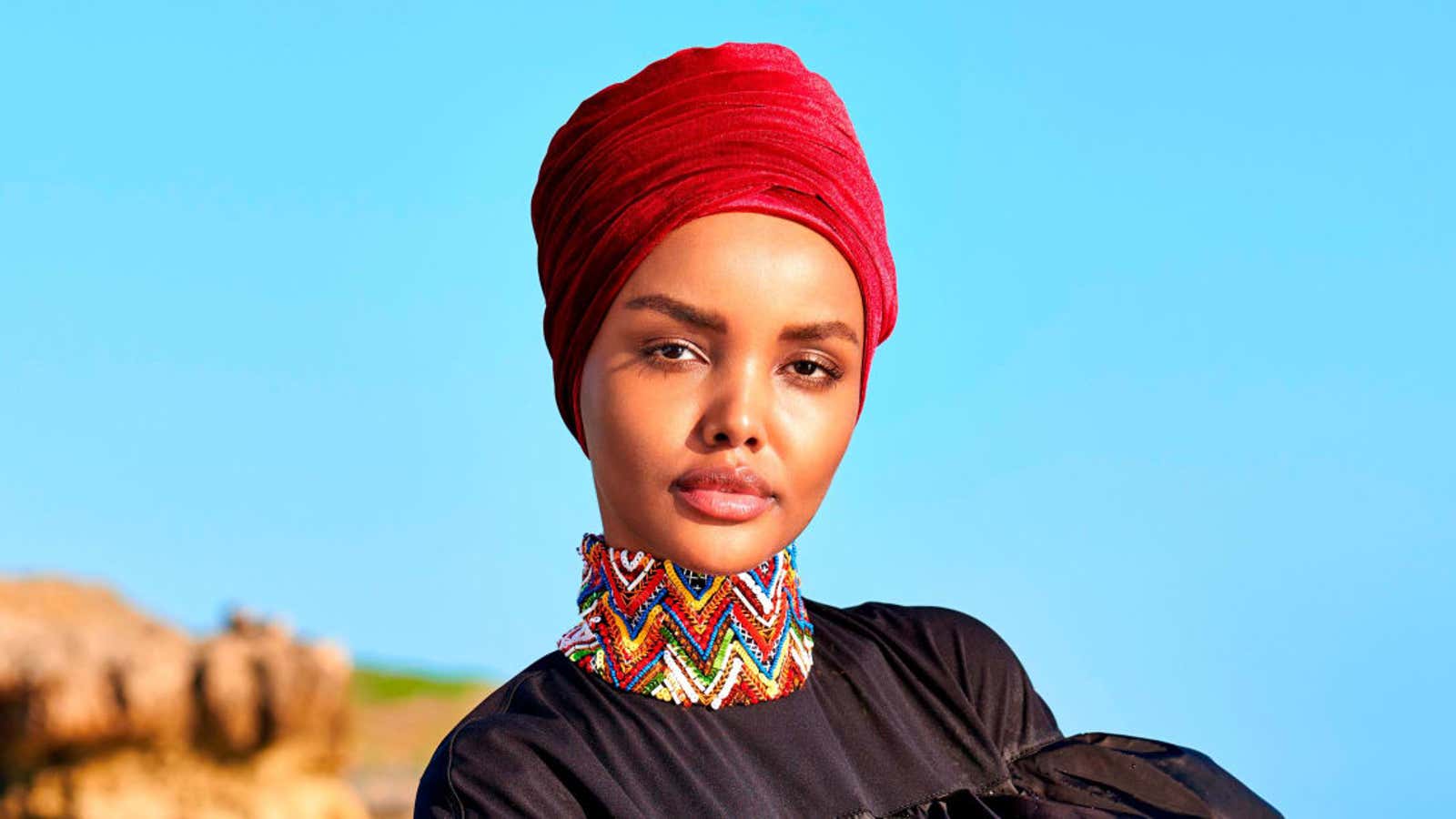Halima Aden, a Somali-American model who has been on the cover of British Vogue and walked New York Fashion Week runways, will be the first to wear a hijab and burkini in Sports Illustrated’s annual Swimsuit Issue.
Born in Kenya’s Kakuma refugee camp, she moved to the US at age seven. Images from her shoot at Kenya’s Watamu Beach will be available in the edition published on May 8.
Sports Illustrated, whose swimsuit edition has been published since the 1960s, announced Aden’s debut yesterday (April 29). It’s unclear if she will be the first Muslim model to appear in the issue that traditionally features female, bikini-clad, semi-nude, and nude models, entertainers, and athletes. But she will be the first to wear a burkini, the full-body swimwear preferred by some observant Muslims.
Aden’s inclusion seems to be part of a socially conscious facelift the magazine has been experimenting with in the past few years. SI was once a giant of the sports-media landscape, its swimsuit edition historically a commercial behemoth, spawning coffee-table books, calendars, TV specials, trading cards, and other products that brought in roughly $10 million a year in the early 2000s.
Now SI and its swimsuit issue are struggling along with the rest of the magazine industry, as readers and advertisers abandon print.
SI was reduced to bi-weekly publication in 2018. Its former parent company, Time Inc., was sold to the Meredith Corporation in 2017, which announced plans to resell SI and several other titles last year. Licensing company Authentic Brands, which owns retail labels like Nautica and Juicy Couture, is now in talks to buy SI for about $110 million, the Wall Street Journal reports.
The swimsuit issue’s function as a slightly-nicer-than-Playboy porn mag no longer holds the same appeal. “What is the function of the Sports Illustrated Swimsuit Issue?” Alexandra Schwartz asked in the New Yorker last year. “Back in the day, it was reliable masturbation fodder, a late-winter gift to the flesh-starved straight-male gaze, though there’s now so much of that to go around on the seasonless Internet that the issue’s lustre as mainstream smut has faded.”
SI seems to be trying to forge some kind of new identity for the swimsuit issue, with various, flailing attempts at wokeness. Schwartz cites the 2018 edition as a sort of ridiculous attempt at marketing a magazine full of nude women in the year following the rise of the #MeToo movement. The issue included a section called “In Her Own Words” that featured a shoot (commissioned and photographed by a female editor and photographer) featuring nude models Sharpie-d with “positive” words of their own choosing:
It was a clumsy endeavor—silly at best and a parody of empowerment at worst. What it did show, though, was that someone at SI recognized that pouty, sex-kitten depictions born of the ’50s, when the magazine launched, might not be so palatable any more. The move towards diversity that Aden represents seems to have had the intended effect, with mainstream media applauding SI’s “history-making” decision.
SI’s fumbling experiments with wokeness are a reminder of another historically racy brand that has stubbornly clung to its own sexed-up marketing.
Indeed, Victoria’s Secret has paid the price for doubling down on this commercial portrayal of women: The lingerie retailer has been in free fall since 2015, dragging shares in parent L Brands down 72% over three years. Moody’s has downgraded L Brands’ outlook from “stable” to “negative.”
Maybe VS should take note.
In the face of financial disaster, it has chosen to eschew body-positive and inclusive lingerie offerings and noisily defend its aspirational bombshell pitch—a decision that has its business in tatters.
